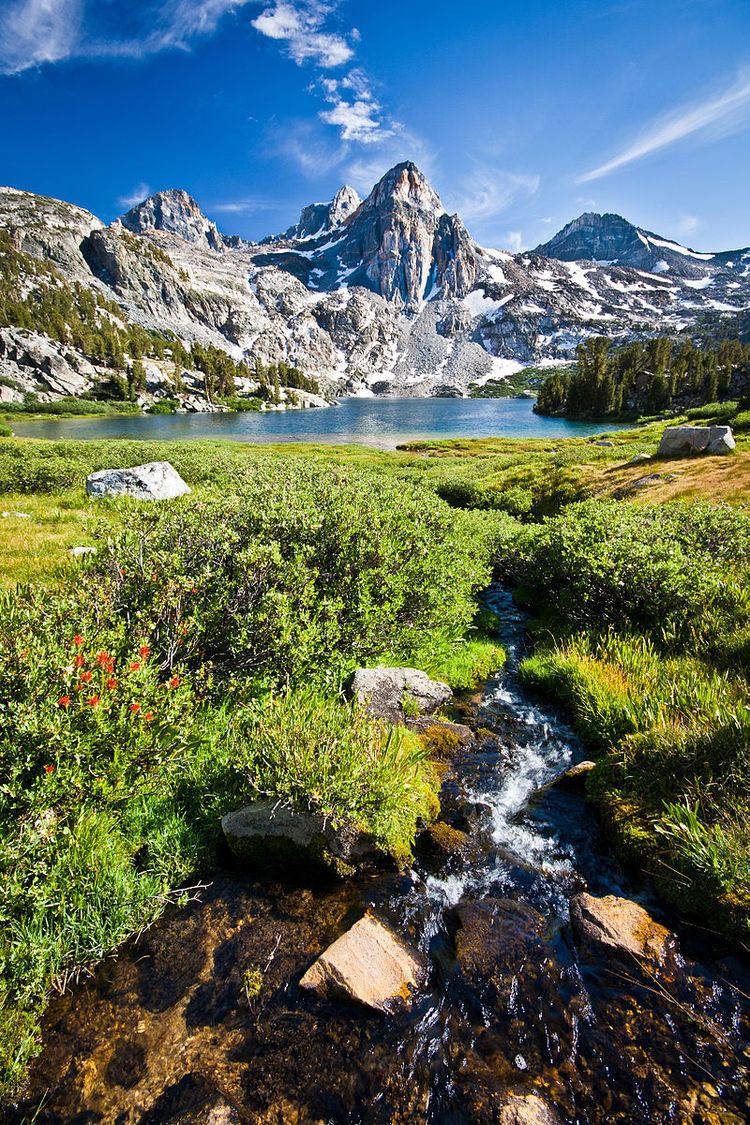 | ||
Sequoia-Kings Canyon Biosphere Reserve (established 1976) is a UNESCO Biosphere Reserve located in the southern Sierra Nevada of California. The 349,543 hectares (1,349.59 sq mi) biosphere reserve comprises Sequoia and Kings Canyon National Parks.
Contents
From west to east, the two adjacent parks extend from the foothills of the San Joaquin Valley to the crest of the Sierra Nevada and contain the highest parts of that range. Pleistocene glaciers left an abrupt topography of granite carved canyons and domes and hundreds of glacial lakes.
Ecosystems
The most notable vegetation is forests of giant sequoia (Sequoiadendron giganteum). Oak woodland (blue oak, interior live oak) and chaparral with chamise and manzanita characterize the lower elevations. Mixed conifer forest with Colorado white fir, red fir, western yellow pine (ponderosa pine), sugar pine and lodgepole pine forests and montane meadows occupy the middle elevations. Subalpine forests with foxtail pine, whitebark pine and meadows, krummholz, and alpine ecosystems typify the higher elevations.
Cultural impacts
In addition to their natural diversity, the parks also host a unique cultural and historical record. Archaeological sites date back at least five thousand years, indicating the presence of Native American peoples throughout the Sierra Nevada. Past herding of sheep (1850-1900) and cattle (1850-1940) has resulted in significant changes in the species composition and extent of upland and foothill vegetation. Wildfire suppression during the 20th century has interrupted successional patterns. Air pollution from outside the biosphere reserve affects several prominent tree species. Recreational impact is locally acute. The two parks have been jointly managed by the National Park Service as the Sequoia and Kings Canyon National Parks since 1943, and Sequoia National Park contains a number of visitor centers, campsites and supply facilities.
